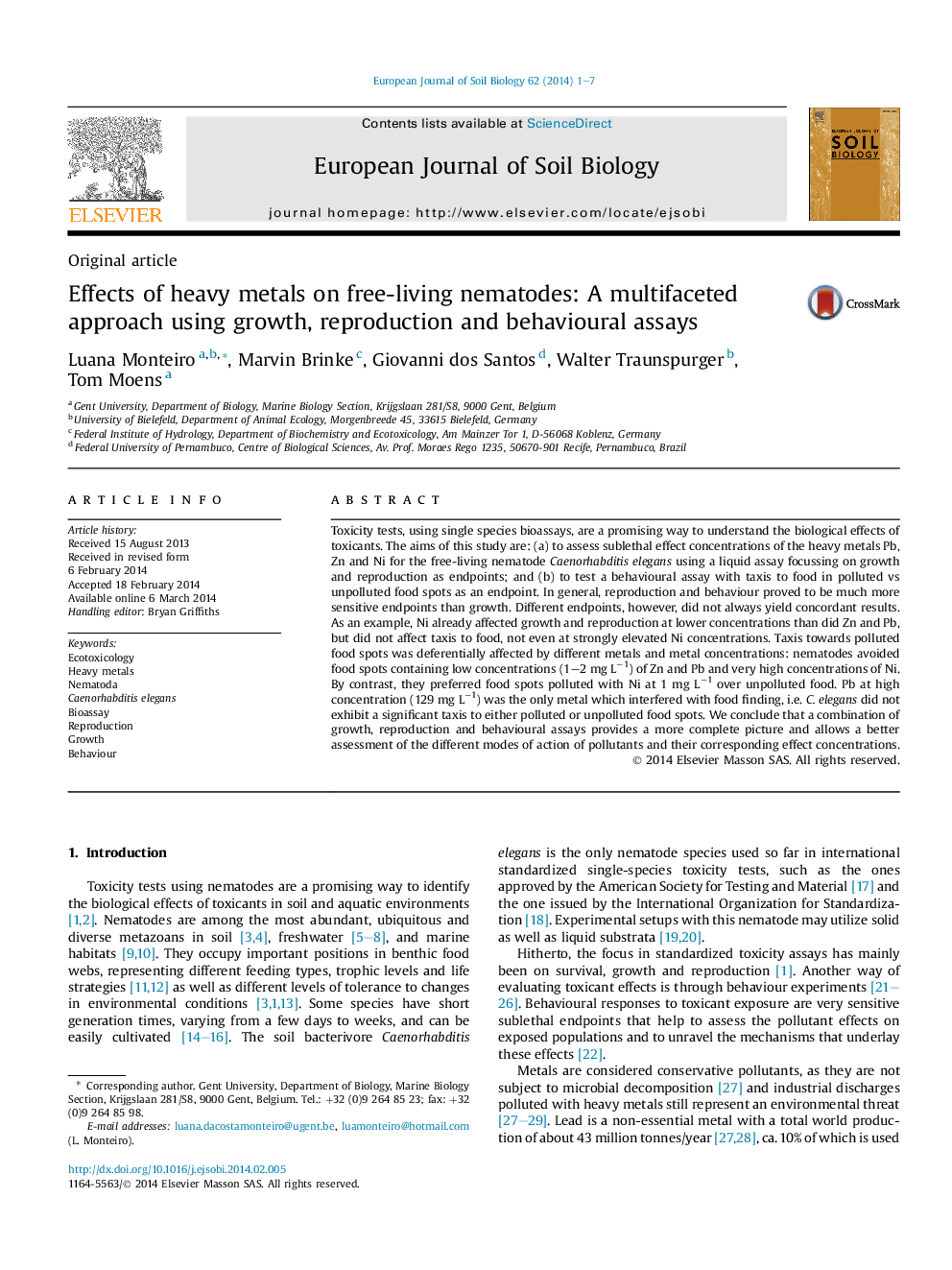| Article ID | Journal | Published Year | Pages | File Type |
|---|---|---|---|---|
| 4391818 | European Journal of Soil Biology | 2014 | 7 Pages |
•1 mg L−1 Ni strongly impaired C. elegans growth and reproduction than 1 mg L−1 Pb.•Toxicity order found in C. elegans reproduction Pb ≥ Ni > Zn; and growth, Ni > Pb > Zn.•Reproduction proved to be a more sensitive endpoint than growth, except for Ni.•Zn had the strongest effect in the behavioural assay from the three metals tested.•Behavioural assays provide important and complementary insights.
Toxicity tests, using single species bioassays, are a promising way to understand the biological effects of toxicants. The aims of this study are: (a) to assess sublethal effect concentrations of the heavy metals Pb, Zn and Ni for the free-living nematode Caenorhabditis elegans using a liquid assay focussing on growth and reproduction as endpoints; and (b) to test a behavioural assay with taxis to food in polluted vs unpolluted food spots as an endpoint. In general, reproduction and behaviour proved to be much more sensitive endpoints than growth. Different endpoints, however, did not always yield concordant results. As an example, Ni already affected growth and reproduction at lower concentrations than did Zn and Pb, but did not affect taxis to food, not even at strongly elevated Ni concentrations. Taxis towards polluted food spots was deferentially affected by different metals and metal concentrations: nematodes avoided food spots containing low concentrations (1–2 mg L−1) of Zn and Pb and very high concentrations of Ni. By contrast, they preferred food spots polluted with Ni at 1 mg L−1 over unpolluted food. Pb at high concentration (129 mg L−1) was the only metal which interfered with food finding, i.e. C. elegans did not exhibit a significant taxis to either polluted or unpolluted food spots. We conclude that a combination of growth, reproduction and behavioural assays provides a more complete picture and allows a better assessment of the different modes of action of pollutants and their corresponding effect concentrations.
